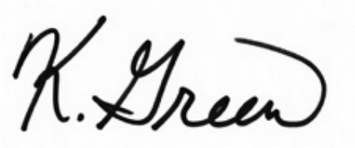You check your brokerage account and see that the market, and your stocks, are dropping. Panic can set in if you don’t have a plan. The longer you watch the more anxious you get. Pretty quickly you convince yourself that selling is the right move before the situation gets any worse. You click the “Sell” button and breathe a sigh of relief.
The truth is that the sell-off will get worse as thousands of other worried investors do the same thing. If you let market swings determine your buy and sell behavior, you’ll end up taking losses when you don’t have to.
Everybody knows the Wall Street motto to buy low and sell high. If you react emotionally to big market moves, you’re almost guaranteed to end up doing the opposite.
Another loyal Yield Shark reader sent me a question last week. They wanted to know what my plans are for a stock in our portfolio that is down 28%. When we add the dividends we’ve collected, the loss drops to 23%, but a loss nonetheless.
Just looking at a big loss on its own makes the situation seem rather grim. But as I explained to my readers in yesterday’s monthly issue of Yield Shark, there’s a little more to the story than that.
The company continues to juggle lingering supply chain hiccups. And a slowdown in consumer spending isn’t helping either.
One of the biggest influences on its share price is probably something known as “the base effect.” This effect happens when a company’s current results are compared to its year-ago results that were unusually good or bad. That’s the case here.
The company’s Q2 2022 financial results set a record high, making this year’s results look bad in comparison. That’s why it’s important to step back and compare this year’s numbers to their pre-COVID levels. That is a much more relevant way to judge performance as companies transition into a post-pandemic new normal. I have talked about this often in Dividend Digest.
Don’t get me wrong, when shares take a nosedive, you have to do some homework to know if there is company-specific trouble brewing. In this case, there are some yellow flags that I’ll keep an eye on.
Still, when shares drop it’s not a reason to panic. Instead, see it as a possible giant sale sign. Personally, I can’t resist the chance to load up on dividend stocks at a bargain price.
Why Your Time Horizon for Dividend Stocks Matters
I’m a dividend investor and analyst, and learned early in my career that all dividends are not created equal. Not even close. There are junk companies paying big dividends that you don’t want to own.
I recommend a variety of companies, and that’s why my Yield Shark portfolio is split into two groups: Bedrock Income and Current Yield stocks.
Bedrock Income are stocks we plan on holding for a longer time. Dividend Aristocrats and Dividend Kings are great candidates for this group. It can also include preferred shares and exchange-traded notes which have safer yields than common stock. Even though the minimum yield I’ll recommend is 3.5%, Bedrock Income stocks generally have a lower yield than Current Yield stocks.
Current Yield stocks typically have a special situation that supports their higher yield. They present the opportunity to earn above-average yields over the short term with no guarantee how long we will hold them. When the special situation is over, we’ll collect our gains and redeploy that money elsewhere. You could reinvest these dividends to compound your yield, but I generally suggest using Current Yield stocks to collect generous income today.
My split strategy lets readers pick and choose which companies best fit into their investing goals. A wealth-building portfolio will favor Bedrock Income stocks, while an income-generating portfolio might favor the higher yields from the Current Yield companies.
When Long-Term Holdings Drop, Buy More
Although it’s tempting to focus on the dollar amount of the dividends you’re collecting, the yield you’re being paid is more important. Knowing the dividend yield is a way to measure and compare the horsepower of different stocks.
A stock’s yield and its share price have what’s called an inverse relationship. This means as the share price goes down, the yield goes up—assuming the annual dividend stays the same. The reverse is also true. When share prices rise, the yield goes down.
So, when you get a deal on shares, your money works even harder for you!
The stock I’m talking about here is both a Dividend King and a member of my Bedrock Income portfolio. It’s a stock I want to hold long term.
So, what are my plans for the stock in question? My answer is simple—use share price dips to add to your position, lower your average cost, and boost your yield.
We have 9 long-term positions in the Yield Shark portfolio with a buy recommendation right now. These are stocks I think we could potentially buy and hold forever. They have yields ranging from 3.8% to 7.3%. If we see volatility through the end of the year, I think we’ll be able to lock in some great deals on these positions.
For more income now and in the future,





